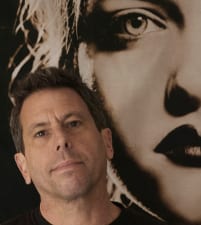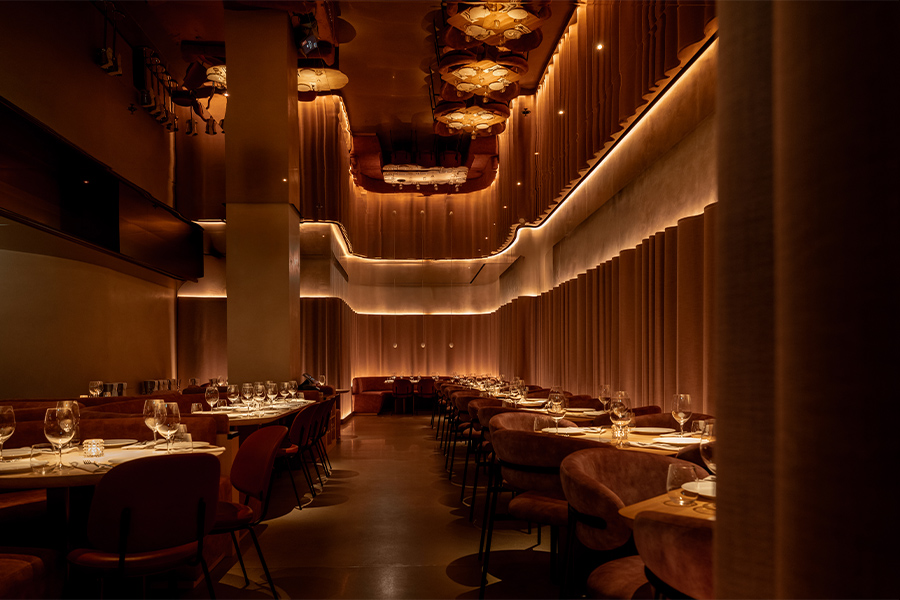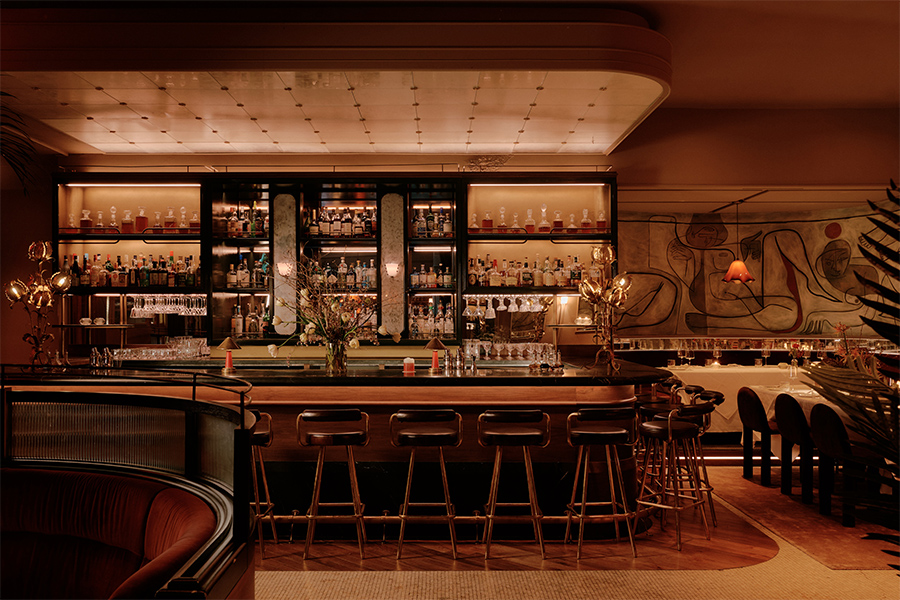.jpg) Long before launching Oakland, California-based Mister Important Design in 2005, Charles Doell was known for creating some of the West Coast’s most alluring nightlife spaces. Now, with myriad restaurants, lounges, and hotels added to his roster-from San Francisco’s intimate Gitane restaurant to Alegra nightclub in Dubai to the newly revamped W San Diego-he and his team are constantly envisioning different realms of hospitality. Here, Doell talks about a high school fascination with Artforum magazine, globalization, and why a designer should think inside the box.
Long before launching Oakland, California-based Mister Important Design in 2005, Charles Doell was known for creating some of the West Coast’s most alluring nightlife spaces. Now, with myriad restaurants, lounges, and hotels added to his roster-from San Francisco’s intimate Gitane restaurant to Alegra nightclub in Dubai to the newly revamped W San Diego-he and his team are constantly envisioning different realms of hospitality. Here, Doell talks about a high school fascination with Artforum magazine, globalization, and why a designer should think inside the box.
Did you always know you wanted to be a designer?
I actually studied to be an art historian as an undergraduate, and a fine artist in graduate school. I never really came to the profession with an urge to decorate, more an urge to cause a little stir with interiors as visceral experience. Interior design has given me a pretty expansive format to experiment with a very particular form of installation art, albeit a very commercial form with lots of constraints, collaboration, and compromise.
What are some of your first memories of design?
In high school, my first memories of design involved smoking weed and then heading out to the library to peruse and marvel at the pages of Artforum and Art in America. It was amazing to me that people could get paid for creating things so strange and beautiful.

Gitane, San Francisco
How did you end up where you are today?
Where am I today? Wherever that is, it’s been a circuitous route getting here. First job out of art school was with a popular special events company in San Francisco where I ran their production shop. Got very comfortable with quickly transforming interiors with lighting and props. Moved from there to start a design/build firm in San Francisco called Fun Display. Yes, another goofy name. This one was hatched when my partner’s art gallery, Fun Gallery West, closed and we inherited his rotating fun sign. Onwards and upwards, we started out with window display, then small retail and exhibit production. Landed our first nightlife interior from Chip Conley (Joie de Vivre hotels) back in 1992 with our all-red and hugely popular postage stamp of a bar, the often-imitated Red Room. From there we had a string of San Francisco hotspots: Backflip, also for Joie de Vivre; Zodiac Club; Mercury. My partner and I opened our own nightclub, Sno-Drift, an ironic sixties ski lodge in an industrial area of San Francisco back in 2000. A huge first year got us thinking we would just be nightlife impresarios from that point on. Seemed a very easy way to make money-at least for the first year or so. Fast forward to 2005. By that point I had sold my interest in the club world, partner and I went separate ways, and I launched Mister Important Design as a design-only firm. It’s been another great run since then, first mostly nightclub focused, then increasingly restaurant and lounge, both domestically and internationally. Now we are seeing more and more hospitality interest with two W properties-San Diego and Los Angeles-as well as a Hard Rock Hotel in Palm Springs.

Veladora at Rancho Valencia, Del Mar
Do you have a greatest lesson learned?
1. If you can’t draw, or even if you can, you should learn how to render your interiors in CAD.
2. Keep your head in the game. I know some designers don’t want too much current design chatter to influence them, but I’m just the opposite. I subscribe to at least twenty design and art periodicals, and I love to see what people are doing with interiors and art worldwide.
3. Listen closely to your client, and empathize aesthetically.
What inspired you to start Mister Important?
I guess I had something to prove to myself after I walked away from my first company and sold my stake of my nightclub. Could I make it as a designer without a partner? Did I have real talent in comparison to the companies I was envious of? Could I create a commercially viable style that was true to myself while still taking great care of my clients? You know how it is: designers are usually fifty percent in love with themselves and fifty percent suicidal. I guess it’s just the nature of having to keep up with your competition and outdo yourself job after job.
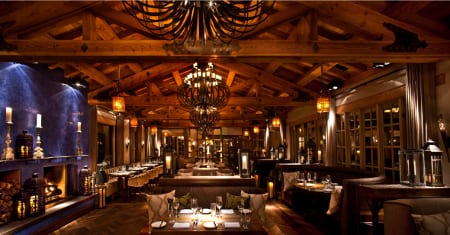
Veladora at Rancho Valencia, Del Mar
Tell us about your office culture and design process.
Not too much of a culture-just a very flexible place to work, but unfortunately not a lot of job security.
Why hospitality?
Simply, hospitality offers the biggest canvas for an interior designer.
What are some of the challenges of the industry today?
Keeping a company lean enough to compete, yet retain good staff during slow periods is the biggest challenge I see. I can’t imagine how people can keep the kind of staff that was the norm before the ‘great recession.’
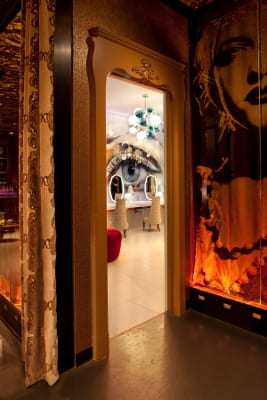
Vanity at Hard Rock Hotel, Las Vegas
You work on a number of international projects. How do those global experiences inspire and help you do a better job in the hospitality sphere?
Newsflash: we are truly in a global age. People in Ludhiana, India want the same nightlife and hospitality experiences as Los Angeles or London.
What’s a recent project that was most challenging and why?
Most recent is the new Hard Rock Hotel in Palm Springs. Challenge there is how to make it relevant, charming, and sexy enough to compete with the Ace, Viceroy, and Parker.
What’s one project that you are most proud of and why?
Most proud of Vanity in the Hard Rock Hotel, Las Vegas. Did a bunch of things I had never done, or seen done before, and miracle of miracles they all looked great.
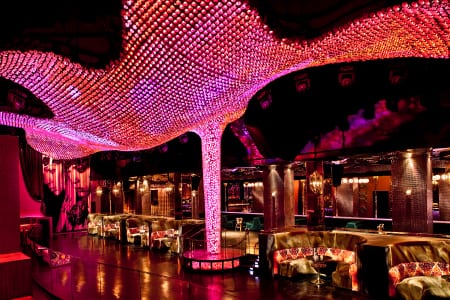
Vanity at Hard Rock Hotel, Las Vegas
What are some projects you are currently working on? What’s next for you?
You know I don’t turn anything down. Just completed the restaurant Veladora at the Rancho Valencia in Del Mar, and we have two new lounges opening end of year. Coming up: W Los Angeles and Sex and Disco, a subterranean DJ lounge in San Francisco opening next year. Oh, and a private nightclub in Fresno.
Most creative solution for a cool design feature that you have recently come up with?
Probably the bonfire feature at the W San Diego. Needed a cheap way to do a permanent ‘bonfire’-a stack of Emeco chairs can burn for eternity.
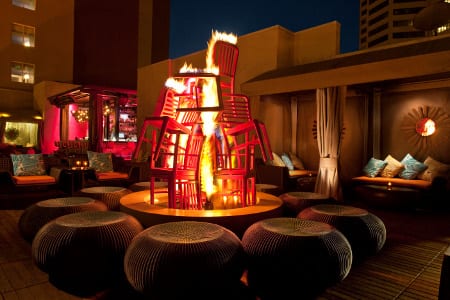
W San Diego
What would be your dream project?
Not sure, since every project is a potential dream project. It’s not the size of the project or the budget. It’s really the best when you connect with a client, make them happy with your work, and keep them as friends.
What’s the key to a successful collaboration between designer and client?
Being sensitive and listening well. Clients often are looking for some guidance and appreciate thoughtful and enthusiastic concept work.

W San Diego
What’s the most important thing to remember when designing a hospitality space?
Learn to think inside the box. Every job and client brings a box. The walls of the box are budget, brand narrative, client aesthetic, competing properties. The challenge is to be creative inside that box. Having a box helps you focus on the challenge of doing something inside of it that hasn’t been done a thousand times before. Not easy.
Motto to live by…
‘Duh, winning.’ -Charlie Sheen
Greatest accomplishment so far?
I don’t really look at anything I’ve done as a particularly great accomplishment. Our industry is basically about entertainment, so you take your achievements with a grain of salt. If anything, my three children are far more remarkable than anything else I’ve done.
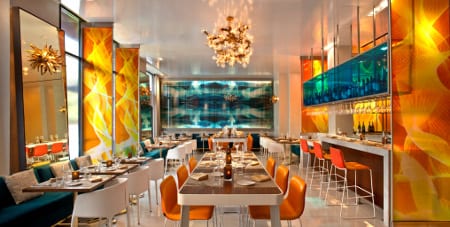
Kelvin at W San Diego
If you weren’t a designer, what would you be?
That’s hard to imagine. Starving artist? Rodeo clown? Astronaut? OK, astronaut.
When you are not in the office we can find you…
I’m either at the gym, at the bar, or in the kitchen. Quintessential metrosexual, I suppose.
If you could have supper with anyone living or dead, who would it be?
Carlo Mollino.
Describe that meal, the wine, and the person you’re eating with.
We are eating at Alegra in Dubai, and Carlo Mollino has brought along all his Polaroids…. time for a vodka martini and some raw oysters.
Whom do you admire the most? Why were they an influencing factor in your career and life?
Philippe Starck for continuing to be such a prolific and still relevant stylist. Who else can mix Old World decadence, twentieth century-Surrealism, and current elements of fine art and culture like that? And make it look fresh every time? Even to me, that is truly an achievement.

